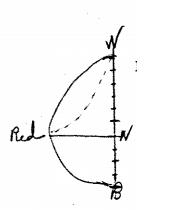
It was the early 1900’s and A.H. Munsell was fully immersed in scientific research on color in preparation for his upcoming book A Color Notation. While his impetus for developing the Munsell Color Order System was rooted in education—a logical, easily visualized method to teach color theory—the basis for Munsell’s work was indeed scientific.
A.H. Munsell’s Research on Color Leads to Photometer Patent
In 1901, A.H. Munsell patented a photometer, which proved to be important in developing the color order system. He consulted with several leading scientists, including American physicist, Ogden Rood who was influential in Munsell’s work on the photometer along with other science luminaries. Munsell’s color theory leaves no stone unturned. He researched the relationship of Hue, Value and Chroma, and early on in color science, began to explore the relationship between light source and color. The light source/color relationship was made clear at an October 28, 1902 meeting in New York at the Edison Light Company, where several papers were presented suggesting that “Imitation of daylight – and means of measuring other light in terms of daylight—imperative for color comparisons,” hence today’s standards requiring daylight for accurate color evaluation. According to Munsell’s diary, after spending his morning immersed in the latest scientific color research, Munsell, the consummate artist, spent his afternoon at New York’s Metropolitan Museum of Art “studying old masters.”
Over the next several months, Munsell visited with colleagues to test his photometer and the results were positive. Not only was the photometer deemed accurate but also practical. His colleagues saw the practicality of a device that could overcome the limitations of the human eye. One of his colleagues suggested that the photometer’s commercial use be piloted at the New York Navy Yard for testing signal glass. Specifically, it would be use to check for color blindness.
From Photometer to Color Top to Color Order System
At the same time Munsell was working on what would become the disc colorimeter—a series of colored discs that when rotated create color. Munsell referred to it in his early work (circa 1902) as a “color top.” The discs were tested to show the relationship between chroma (color intensity) and value (lightness or darkness) for any hue. Munsell was attempting to create a set of templates that would describe the combination of chroma and value or any hue. Munsell established the value scale of ten equal steps from white down to black. Munsell took the strongest (high chroma) red and reduced it to white, black and gray. His color experiments showed that equal loss of chroma requires unequal steps of value and unequal steps of chroma permit equal steps of value. In other words, in order to maintain an equal value scale, the chroma of the red hue would have to be adjusted in unequal steps as chroma was reduced from highly saturated red to white and equally as chroma was stepped from highly saturated red to black.
The exercise of developing the color templates was important to Munsell color theory in that he was uncovering the sensitivities of the human visual system to certain colors. It explains why colors of a certain value (lightness) in a Munsell Book of Color do not go beyond a certain chroma—it’s not physiologically possible. Munsell points out in his diary that the exercise was “very fatiguing.” He painstakingly set up the experiment, viewed and graphed each color.
Though the color top was developed for art education purposes, Munsell’s journey to develop the photometer and color top, was grounded in early color science principles. Throughout his color research process, he applied these principles to determine the hue, value and chroma scales for his upcoming Color Atlas. Learn more about how the Munsell Color Order System works in real life applications.
References:
A. H. Munsell Color Diary, 1908-1918, Volume A Part 5 and Volume A Part 6. Courtesy of Rochester Institute of Technology, Munsell Color Science Laboratory.



Leave a Reply